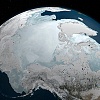Militarisation of the Arctic: (1) Russia
In
Log in if you are already registered
Russia and its Arctic Neighbours: After Crimea
Russia’s internationally condemned annexation of Ukraine’s Crimean peninsula changed not only international perceptions of Russia’s ambitions, but those in the country itself as well. With supporters proudly proclaiming, “Крым наш!” (“Crimea is ours”), many began to wonder where – if anywhere – the country’s territorial aspirations would focus next. The violence in Donetsk and Luhansk began soon afterwards, but is far from clear. Depending whom one asks, the current situation in Ukraine is variously described as twin home-grown independence movements, a Russian-orchestrated irredentist land grab and the response to a perceived Western plot against Russian interests in the region. Regardless of one’s interpretation of the events, in the wake of the annexation of Crimea, Ukraine has, without a doubt, become a focus of security interest, but it is not alone. The Arctic, too, became an area of strategic importance. As Novaya Gazeta columnist Aleksandr Chursin put it, “After Crimea, is the Arctic ours?”[1]
The Russian Arctic – a Hot Topic
Defence of the Arctic, of which there is no mention in the previous 2010 Military Doctrine of the Russian Federation[2], rounds off the list of the armed forces’ 19 main objectives in the Doctrine’s 2014 edition[3]. Far from being empty rhetoric, the Arctic’s confirmed status as a region of special military interest echoes concerted efforts to reclaim Soviet-era military installations in the north and refurnish them with personnel. The Ministry of Defence has also moved to improve radar and communications capabilities in the far north, installing tracking and radar systems on Cape Schmidt and Wrangel Island in the far eastern Chukotka Autonomous Okrug[4]. Closer to Europe, around 3000 personnel from the Northern Fleet have set up base at two reconstructed Soviet-era military towns in Murmansk Oblast, a northern region that borders both Finland and Norway[5].
Although the trend toward improving military infrastructure – if not strengthening military presence – is clear, its direct causal connection to tensions over Ukraine is more tenuous. Even before the outbreak of the crisis in Ukraine in late 2012, the Russian ministry of defence had announced plans to increase its presence on Novaya Zemlya at Rogachevo airbase and install advanced missile defence systems capable of destroying nuclear-armed missiles[6]. Similar renovations or expansions have taken place at Temp airbase on Kotelny Island in the New Siberian Islands and Graham Bell Island in Franz Josef Land[7].
Moreover, Russia’s armed forces activities in the north have not concentrated exclusively on traditional security issues, but also on protecting the Arctic’s sensitive environment. As of this year, the Northern Fleet has established a regional centre in the Arctic for cleaning up abandoned Soviet-era military sites to reduce the damage remaining materials could cause to the region’s ecosystem[8]. More cynical readers may interpret this move as little more than political ‘greenwashing’, but environmental oversight – if truly effective – would doubtlessly be a laudable addition to Russia’s intensifying military actions in the region.
Militarisation: Is the situation heating up? Or is it nothing but hot air?
Overall, the military situation in Russia’s Arctic has changed since Zagorsky’s 2012 article, but the changes’ link to the Ukrainian crisis is less clear-cut. Without more complete access to data on the evolution of Russia’s military presence in the Arctic, it is impossible to say with any certainty that the remilitarisation of the Russian Arctic stems from renewed distrust of its European neighbours and their North American allies, but it is certainly true that Russia has actively improved and expanded its military infrastructure in the region. Arctic militarisation, as many have feared for several years, is back on the horizon.
For information on Nordic military installations on the Arctic, see our next instalment.
For this project’s directory, click here.
[1] Chursin, Aleksandr. “After Crimea, is the Arctic ours?” [«После Крыма – Арктика наша?»], Novaya Gazeta [Новая Газета], 13 November 2014. <http://www.novayagazeta.ru/columns/66080.html>
[2] Military Doctrine of the Russian Federation [Военная доктрина Российской Федерации], 5 February 2010. <http://news.kremlin.ru/ref_notes/461>
[3] Military Doctrine of the Russian Federation [Военная доктрина Российской Федерации], 30 December 2014 < http://www.rg.ru/2014/12/30/doktrina-dok.html>
[4] Mandraud, Isabelle. “Russia prepares for ice-cold war with show of military force in the Arctic”, The Guardian, 21 October 2014.
[5] “Plans to reestablish two military towns in Murmansk Oblast“ [«В Мурманской области пранируют восстановить два военных городка»], TASS [ТАСС], 4 March 2014. < http://tass.ru/spb-news/1019919>
[6] Mikhailov, Aleksei. “Ministry of Defence sends MiG-31s [supersonic interceptor aircraft] to be based in the Arctic” [«Минобороны оправляет МиГ-31 на Новую Землю»], Izvestiya [Известия], 25 September 2012.
[7] Ibid.
[8] “An environmental centre to be constructed in the Arctic” [«В Арктике создадут экологический центр Северного флота»], TASS [ТАСС], 11 October 2014. <http://tass.ru/armiya-i-opk/1501217>




